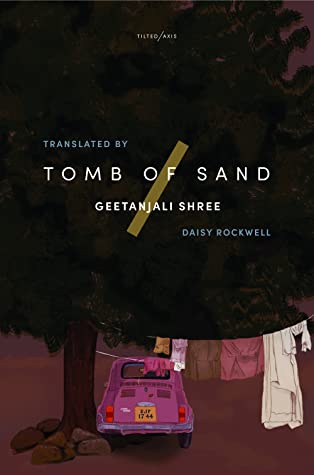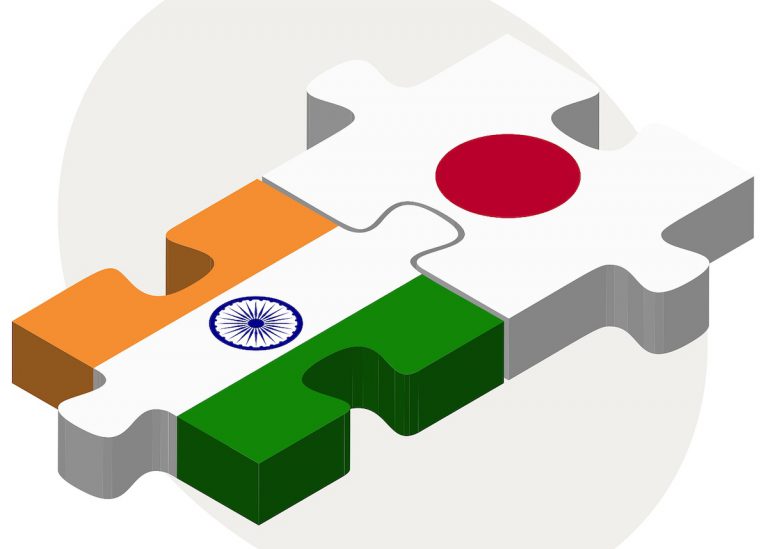Book Review – “The long game: How the Chinese negotiate with India”
Arjun Singh Dyarakoti is currently working as Junior Research Assistant at School of Internal Security, Defence and Strategic Studies (SISDSS), Rashtriya Raksha University, Gandhinagar. He is also enrolled as a PhD candidate at the School of International Studies, Central University of Gujarat.
India-China relations have been a focus of attention for the foreign policy experts, scholars and other stakeholders for a long time. Several books have been written by scholars and former diplomats on the past, present and future of India-China relations. The book titled “The Long Game: How the Chinese Negotiate with India” by Vijay Gokhale, the former Foreign Secretary of India offers some unique insights into Chinese attitude and strategy to deal with India on important issues that concern both countries. Vijay Gokhale, who retired in 2020 from the Indian Foreign Service after serving for nearly four decades, presents six case studies in six separate chapters followed by another chapter titled ‘Lessons for India’ to dissect the diplomatic strategies and other tactics deployed by China to deal with India in the last seven decades. The book has been written without using heavy jargon, thereby making it a simple and interesting read for even those audiences who otherwise aren’t very familiar with the technical and theoretical concepts of foreign policy, diplomacy and international politics.
The author begins by arguing that the Indian leadership was not a match for Chinese leadership in the initial decades of independence due to a lack of prior experience in dealing with diplomacy. On the other hand, the author argues, the Chinese leadership had considerable prior experience in dealing with diplomatic relations and foreign affairs even way before the founding of the People’s Republic of China in 1949, while the Chinese dealt with the Soviets, British and Americans from the 1930s upto 1949.
The first chapter of the book, titled ‘Recognition’, delves into the recognition of the People’s Republic of China by the Government of India on 30 December 1949. It highlights the circumstances and factors that might have led the Indian leadership of that time to recognise China as a sovereign state as early as possible. The author writes that even though the early recognition of China may have given India some temporary boost in international stature, however, India missed out on exploiting the first mover advantage to secure substantive gains. On the other hand, China gained significant benefits out of the early recognition by India. He attributes this to the advantage the Chinese had over the Indians under the leadership of Mao Zedong and Zhou Enlai who already dealt with diplomatic relations with the Soviets, Americans and Japanese even before 1949. Moreover, the Indian approach, according to the author, was a mixture of emotionalism and conjectures without any strategy. Gokhale writes that India lost the crucial bargaining points and gave up any leverage that it otherwise could have gained as it severed its ties with the Nationalist government in Taiwan and accepted the Communist rule in mainland China as the sole sovereign state.
The second chapter, titled ‘Tibet: The Price of Friendship’, deals with Tibet issues and how the negotiations and discussions with China at various stages culminated in an agreement on ‘Trade and Intercourse ‘between the Tibetan region of China and India on 29th April 1954. It engages with the brief history of Tibet in the early twentieth century and how it came under the suzerainty of China in 1950, when it was invaded by China’s People’s Liberation Army (PLA) in the name of liberation. The author argues that the 1954 diplomatic negotiations were an achievement for China, as it was able to realise the Indian consent to China’s occupation of Tibet by recognizing it as a “Region of China’.
The third chapter titled ‘Pokharan: How to Untie a Knot from the Tiger’s Neck’ deals with India’s nuclear test in 1998 and the consequences that followed. It talks about the Chinese decision to stay out of the Non-Proliferation Treaty (NPT) ambit through the 1970s and its formal accession to the NPT in 1992. The author has elaborated in detail as to how China responded to India’s Pokhran nuclear testing and tried its best to isolate India by building an international coalition against it. Following the US sanctions on India, China was instrumental in laying down the conditions for the lifting of sanctions on India by P-5 countries of the UN Security Council. Gokhale argues that the restoration of normal relations with China after the fallout of relations post the Pokharan test is an achievement for India’s foreign policymakers. He further sheds light on the Chinese strategy of pursuing its policy and agenda by hiding behind other countries, as it tried to rally against India by sitting on the shoulders of America while disguising its own anti-India strategy.
The fourth Chapter, titled ‘Sikkim: Half a Linguistic Pirouette’, provides details about the long diplomatic negotiations between India and China that finally resulted in the official recognition of Sikkim by China as a part of the Indian state through a joint statement in April 2005. It also gives an account of the Chinese reaction to the merger of Sikkim with India in 1975, which the Chinese Communist Party’s mouthpiece, People’s Daily, described as ‘a flagrant act of colonial expansion’. The author also talks about the steps taken by the subsequent governments, right from Rajiv Gandhi to Atal Bihari Bajpayee, to put pressure on China to recognise Sikkim. Gokhale considers China’s recognition of Sikkim in 2005 as an important milestone in India’s China diplomacy and an outcome of the lessons learnt by Indian leadership from the days of 1950s. Taking cues from China’s handling of the Sikkim issue, the author deduces the Chinese strategy of keeping an ambiguity of position and repeating its position on multiple occasions as a deliberate ploy to buy time and to test the bottom line of the other side to use it to their advantage in times of need.
The fifth chapter titled ‘123 Deal: The Big Turnabout’ delves into how India manoeuvred through Chinese objections to India’s entry to the Nuclear Supplier Group (NSG) in the backdrop of its 123 Nuclear Deal with America. The author argues that China’s negotiation strategy was founded on maintaining the strategic and nuclear asymmetry in the region by hampering the prospects of India getting waivers in the NSG. China also didn’t want India to emerge as a legitimate nuclear power in the region. To pursue this, the author adds, the Chinese even went to the extent of creating domestic political opposition to the Indo-US deal through the Left parties and left-leaning media in India.
The sixth chapter titled ‘Masood Azhar: The Principle of Consensus’ elaborates upon the long struggle of India to get Maulana Masood Azhar Alvi, the founder of the Pakistan-based Jaish-e-Mohammed terrorist organization, to be enlisted as a terrorist in the UNSC 1267 Sanction Committee and how India overcame the obstacles created by China to prevent India’s efforts. The request of India to enlist Masood Azhar as a terrorist started in 2009 and was finally accepted in 2019 after China acceded to constant pressure and demands of India through various channels. The author believes that this was a significant achievement for India as it was able to pull off a decade-long demand at the United Nations in its favour after a relentless diplomatic pursuit and calibrated negotiations.
The seventh and final chapter of the book titled ‘Lessons for India’ contains the lessons derived from the six case studies for the Indian policymakers. This is perhaps the most important chapter as it summarises the lessons for India to deal with the Chinese in times to come at the diplomatic level. To the academicians and the common public who are interested in India-China relations, this chapter provides a sneak peek into the Chinese mindset at the negotiation stage, during the negotiation stage and in the post-negotiation stage.
This book becomes a distinctive and interesting read for many reasons. Firstly, the author tries to substantiate his points on the Chinese outlook towards India with the help of six specific separate case studies right from the independence till the second decade of the 21st Century, thereby capturing the evolving Chinese and Indian attitudes towards dealing with each other. Each case study is so elaborate and exhaustive that it provides in-depth and usually not-so-well-known information available in the public domain to the common readers. This is why the former Foreign Secretary and National Security Advisor of India, Shivshankar Menon, describes this book as a ‘pathbreaking study of six negotiations between India and China which draws valuable and precise lessons for the future’.
Secondly, the book is very crisp, concise and to the point, written in unsophisticated language, using only relevant references, which makes it an original work of the highest order. Even though the readers might be familiar with the events mentioned in the book, they have been woven together and presented in a manner that helps us understand the meanings of the texts beyond the context, as both India and China sit together on the negotiation table.
Thirdly, the lessons based on the author’s personal experience as a diplomat and also his observation and assessment of the events for India could prove to a very valuable for the foreign policy makers sitting at the highest echelons of power to go about dealing with Chinese both at the bilateral and multilateral level. Since the book doesn’t mention or elaborate on many other important events and engagements between India and China, therefore, it may not be the best book to get a comprehensive understanding of the evolving India-China relations. However, the book does full justice to providing deep insights into the Chinese mind in understanding how they deal with India at the diplomatic level and otherwise.
Featured Image: Penguin









Excellent work
Extremely well written. Great insight 👍